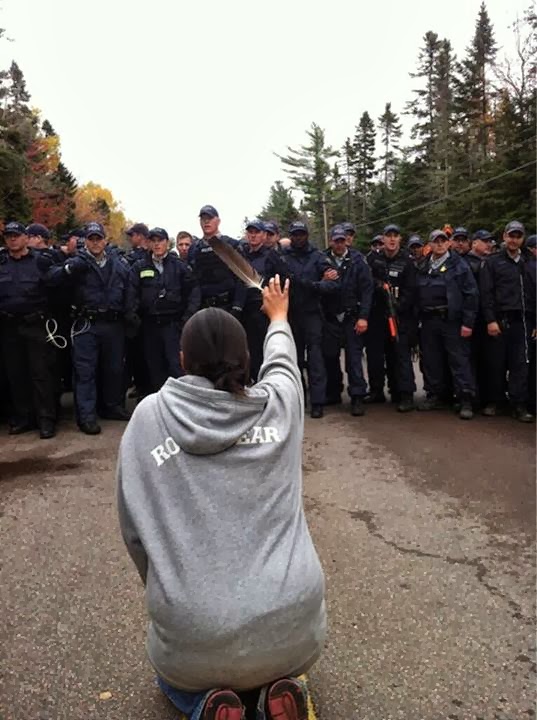Since the time I was small, I have always been told by Chiefs, politicians and elders about the importance of our unity – unity within our Mi’kmaw families, our communities and Nation. Leaders even spoke about the importance of inter-tribal or inter-nation unity. I come from a territory where the Wabanaki Confederacy, a political allegiance…
Tag: Pam Palmater
First Nations Controlled, First Nations Education Act: Standardizing “the Indian in the child”
On February 7, 2014, Assembly of First Nations (AFN) National Chief Shawn Atleo stood with Prime Minister Stephen Harper and Minister of Aboriginal Affairs and Northern Development Canada (AANDC) Bernard Valcourt and announced a “historic deal” on First Nations education. They announced that the federal government would change the name of education legislation to First…
Feathers verus Guns: The Throne Speech and Canada’s War with the Mi’kmaw Nation at Elsipogtog

*As I write this blog, Canada is at war with the Mi’kmaw Nation – again – this time in Elsipogtog (Big Cove First Nation) in New Brunswick. The Mi’kmaw have spoken out against hydro-fracking on their territory for many months now. They have tried to get the attention of governments to no avail. Now the…
Defer, Deflect, Deny, Destroy: Harper’s First Nation Education Act
*(My apologies for the length of this blog – it’s too critical of an issue to cover lightly) Since the federal government first assumed control over First Nation education, First Nations have suffered poor educational outcomes. During the residential school era, federal control over First Nation education meant a very real chance of starvation, torture,…
Continue reading…about Defer, Deflect, Deny, Destroy: Harper’s First Nation Education Act
October 7th Day of Action, The Royal Proclamation and Idle No More: Wading Through the Hype
Today is a day which will challenge Indigenous peoples and Canadians in the ongoing and very uncomfortable decolonization process. Will people celebrate Oct.7, 2013 as the 250th year since the issuance of The Royal Proclamation of 1763? Or will Canadians and Indigenous peoples see beyond the government hype and propaganda that comes with celebrating the…
Manitoba’s Epic Failure: Manitoba and Mining Companies Work Together to Deny First Nation Rights
Dr. Pamela Palmater, Chair in Indigenous Governance And Chief Arlen Dumas, Mathias Colomb Cree Nation In Bruce Owen’s article in the Winnipeg Free Press “Chiefs agree to work on revenue sharing” dated Aug. 23, 2013, Manitoba’s Energy and Mines Minister Dave Chomiak announced that seven First Nation Chiefs had agreed to work with the province…